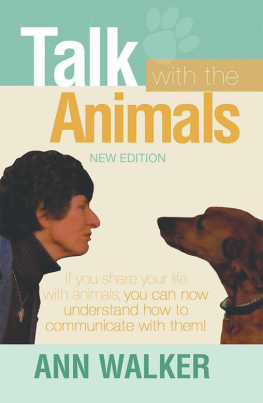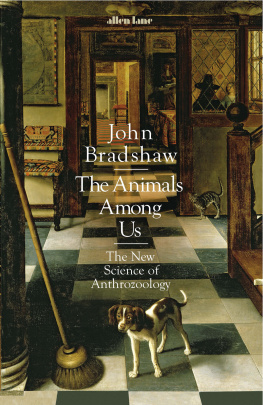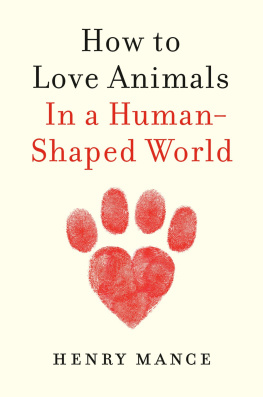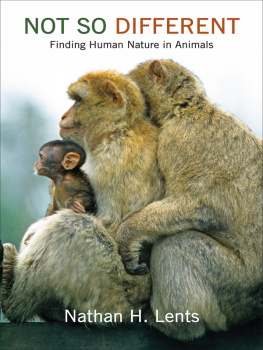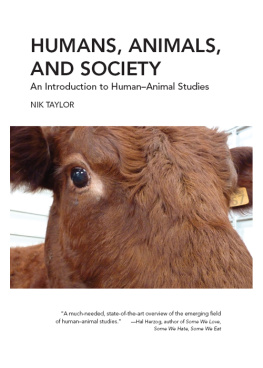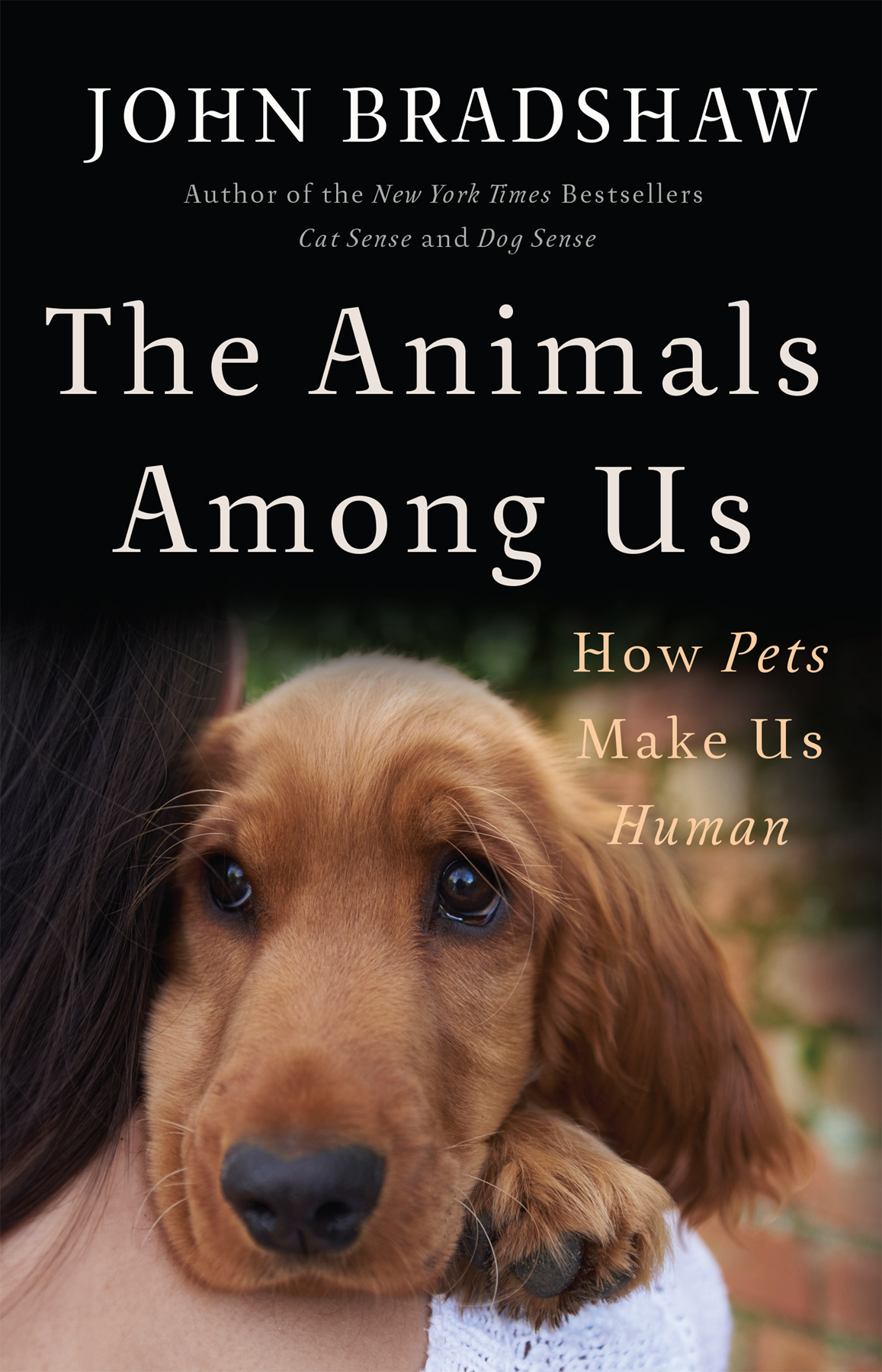W E MAY NEVER KNOW when our ancestors became more than just hunters and began to form lasting, personal relationships with individual animals. The archaeological record can take us back only 12,000 years, to the first known burial of a dog with its master, in what is now northern Israel. But this long-deceased canine was surely not the first pet, even though dogs were the only domesticated animals at that time. Much earlier, if the habits of twentieth-century hunter-gatherer societies are anything to go by, our distant ancestors took animals of many kinds from the wild and raised them to live with people. And so our ability to understand and feel affection for animals must be an ancient trait that most likely emerged as our brains evolved into their current form, about 50,000 to 30,000 years ago. If this is correct, pet keeping makes up an intrinsic part of what it is to be human, and so we should be able to trace some common thread in the practice that transcends both time and culture. The recorded history of pet keeping, however, can only tell us half the story. As the mists of time obscure its origins, in seeking its essence I will initially concentrate on the many similarities between relationships with individual animals in otherwise very different contemporary cultures, ranging from the relict hunter-gatherers of Amazonia to the socialites of Manhattan.
We have no direct evidence proving that people living prior to 10,000 BCE had pets. Any kept by hunter-gatherers must have included species tamed from the wild, which would leave little archaeological evidence: their remains would be impossible to distinguish from those of animals killed for food or kept for otherperhaps ritualisticpurposes.
Since we dont have evidence from the prehistoric past, we must look to that gleaned from the past century. A remarkable number of hunter-gatherer and small-scale horticultural societies that persisted into the nineteenth and twentieth centuries in remote parts of the worldAmazonia, New Guinea, the Arctic, and elsewheregive us insight into the behaviors of earlier Stone Age societies. We can start by asking whether hunter-gatherers already kept pets when they were first documented, before they had time to acquire the habit from the West. If they did, then we will at least know that pet keeping is compatible with such a lifestyle and so may assume with reasonable confidence that our preagricultural ancestors kept them too.
It turns out that many small-scale Paleolithic societies kept pets of some kind: sometimes dogs, but mostly tamed wild animals, captured when young and then brought up as part of the human family. Native Americans and the Ainu of northern Japan kept bear cubs; the Inuit, wolf cubs; the Cochimi from Baja California, racoons; indigenous Amazonian societies, tapir, agouti, coati, and many types of New World monkeys; the Muisca of Colombia, ocelots and margays (two local species of wild cat); the Yagua of Peru, sloths; the Dinka of the Sudan, hyenas and Old World monkeys; native Fijians, flying foxes and lizards; the Penan of Borneo, sun bears and gibbons.
To this list of pets we can add a host of bird species, valued as pets from Brazil to Mali to China. Many have particularly bright plumage, such as parrots, parakeets, and hornbills; others, such as the bulbul, sing. Selection of somesuch as the cassowaries, large flightless birds, cherished by the original inhabitants of New Britain (part of New Guinea), and the pigeons kept as pets in Samoaseems to have been more arbitrary. Nowadays, the availability of Western domesticated animals has reduced some of this diversity, but traditional societies, from the Toraja in the mountains of Indonesia to the Tiv of West Africa, still widely treasure animal companions.
While traditional cultures do keep an extraordinarily wide variety of animals, a recent survey of sixty such societies finds that dogs and cats are nonetheless the most ubiquitous. This preference is clearly not traditional in most cases, since dogs and cats arrived in most parts of the world very late. Dogs were almost certainly domesticated (from the Eurasian wolf) by one or possibly several hunter-gatherer societies several thousand years before the dawn of agriculture and then gradually spread throughout much of the globe. However, dogs were unknown in some parts of South America (for example) until their arrival with European explorers, at which point they quickly displaced the local Aguara dog, a much less trainable domesticated fox. Dog keeping may thus reach back over ten millennia in some societies, such as among the Saami of Finland, but only a couple of hundred years in others. Cats, domesticated less than 10,000 years ago in the Middle East, are less versatile and would have made their appearance more recently than dogs in most parts of the world. The greater prevalence of dogs in the traditional societies surveyed reflects this chronology. Dogs appeared in fifty-three of the sixty societies surveyed, while cats appear in only about half.
Because both dogs and cats have practical uses besides companionship, their status is not always easy to determine, given the cultural and linguistic barriers that often exist between Western researchers and traditional peoples. The survey found that about one-third of the groups in which dogs occurred treated them as pets; another third did not regard them with affection but simply used them as guards or for some kind of work. As expected, those groups that had cats regarded them as useful for the control of vermin, and two out of three such societies thus expected them to find their own food. In the others, however, certain individuals (owners) deliberately fed at least some of the cats and treated them as pets. The same pattern emerges with other domestic species as well. About one culture in ten kept either pigs or horses or another type of hoofed mammal (cattle, camels, water buffalo, sheep) as pets; of course, many more kept these species purely as livestock.
While widespread in these traditional societies, cats, dogs, and other familiar domestic animals represent only a minority of the vast range of species kept as pets. The survey recorded many kinds of tamed mammal, including primates of various kinds, foxes, bears, prairie dogs, and ground squirrels. Over a quarter of the societies also kept birds, which were even more varied than the mammals, including eagles, ravens, parrots, macaws, hawks, and pigeons. Although evidently valued for their appearance, most of the bird species kept had higher than average intelligence (for birds). Many clearly formed lasting relationships with humans: for example, the Yanomamo of South America taught their parrots to talk. Overall, the birds more obviously served purely as pets than most of the mammals: almost all received most of the food they needed, and many functioned as playthings for children.
Fish are the only class of pets almost entirely missing from traditional societies, presumably because appreciating them requires glass for aquaria. An exception: the Polynesians of Samoa capture and then tame eels, keeping them in holes in the ground and whistling to call them to the surface (given the current popularity of garden ponds, a revival of this practice might be amusing).
Overall it seems that most of these societies are (or, until very recently, were) much more physically integrated with animals than we are today. This is hardly surprising, given that many still depend for their livelihoods on a deep understanding of the behavior of the animals around them. But remarkably, the relationships between humans and animals in these societies very often extend far beyond the purely utilitarian. They treat most of the multitude of animals kept in the home with great consideration and kindness.





